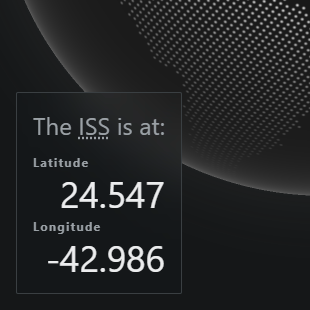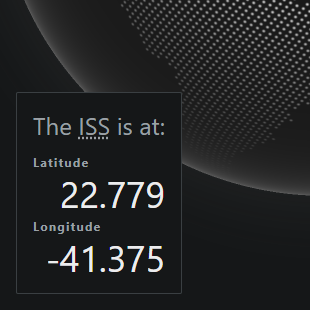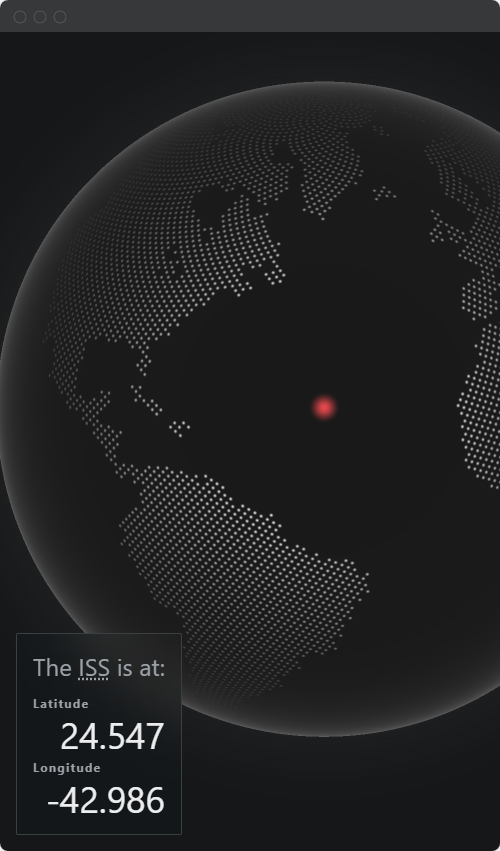Where’s the ISS?
01Why?
A few years ago, I fell in love with coding by watching Daniel Shiffman's youtube channel . Following his series about Data and APIs I created the website that got me my first job interview. This project is an update for that website and a lesson on prioritizing. What started as me trying to replicate the complex layout and features of an asset I helped deploy on ibm.com but quickly transformed into a side project that reflects the quality of the work I strive to do. Instead of adding as many animations, features, and info as possible, I focused on delivering the content in a simple and beautiful way.
02challenges
Request limitations
Using data from a third-party API, I had a couple of limitations; especifically, I could only make one request per second across all clients. Without a caching layer of some sort, a few concurrent users, would quickly exceed my quota. This called for an interesting solution;
creating a serverless cache layer to store fresh data and distribute it or refresh it when appropriate is something I never did before but had fun implementing. Using a blazing fast cache like Redis on Upstash allowed me to deliver an almost instant experience to users while keeping the number of requests to an external API in check.
While server-side challenges are something I don't deal with that much, this one proved to be a valuable learning experience and taught me a pattern that I'm sure I'll use in the future.
So, about the paragraphs above, what the fuck was I thinking??? I spun up a full-on Redis service to cache a REQUEST THAT DOESN'T CHANGE BETWEEN USERS.
The current solution is a SMALLER serverless function that runs faster and is cached on Vercel's EDGE. Supported by a better fetching logic on the frontend, this site should be able to handle any load and update the ISS location as fast as the API allows.
Incremental enhacement
A frosted-glass look was a constant during my experiments, though some browsers didn't support the properties needed for it.
To keep the experience I wanted for users with cutting-edge browsers without sacrificing the experience for anyone, I leveraged the "@supports" media query to make the blur effect an incremental enhancement.

The UI in browsers that support filter properties blurs elements behind it.

While the UI in browsers that don’t support filters, fallbacks into a solid color.
This feature might be a small detail, but an easy win from an "Oh! that's cool" perspective is always welcome.
03Result

Through the literal years of development, this project saw my preferred solutions and approaches changing; Now, much more than a love letter to someone who shaped my early development, this site became a time capsule of my growth.
This tiny piece of user experience—load page, see location—was an opportunity to learn, practice, and experiment. And I can't wait to see how I'll rebuild it years from now.
If you want to see me losing my mind, changing scope, and having fun, look at the project's commit history And to see the actual site, visit iss.igorbedesqui.com
Type of work
- FrontEnd Developer,
- UX/UI Designer
Personal
Tools
- NextJS,
- React,
- Typescript,
- TailwindCSS,
- COBE,
- Tanstack-query,
- Jotai,
- Vercel
2021 ~ 2022